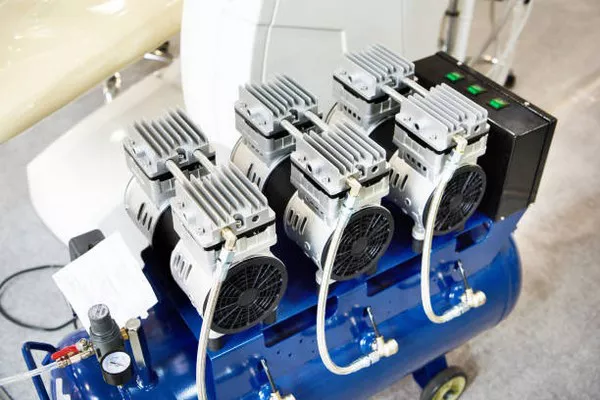In today’s world, where energy efficiency and sustainability are becoming increasingly crucial, understanding the power consumption of appliances is paramount. Among these appliances, the 12V compressor fridge holds significant importance, particularly in off-grid living, camping, and recreational vehicles. With the rising popularity of outdoor adventures and the need for reliable refrigeration on the go, knowing how much power these fridges consume becomes essential for users to manage their energy resources effectively. This article delves into the intricacies of power consumption associated with 12V compressor fridges, exploring their efficiency, factors affecting power usage, and practical tips for optimizing energy consumption.
Understanding 12V Compressor Fridges:
12V compressor fridges, also known as portable or travel fridges, utilize compressor technology similar to traditional household refrigerators but are designed to operate efficiently on 12V DC power sources. These fridges are favored for their ability to maintain low temperatures even in challenging environmental conditions, making them ideal for outdoor enthusiasts, campers, and RV owners.
Power Consumption Overview:
The power consumption of a 12V compressor fridge varies depending on several factors, including:
Size and Capacity: Larger fridges typically consume more power than smaller ones due to the increased cooling space and compressor workload required to maintain optimal temperatures.
Insulation Quality: The insulation of the fridge plays a crucial role in minimizing heat transfer and, consequently, reducing the workload on the compressor. Higher quality insulation leads to lower power consumption.
Ambient Temperature: Hotter ambient temperatures require the compressor to work harder to maintain the desired internal temperature, resulting in higher power consumption.
Frequency of Door Opening: Frequent opening of the fridge door leads to increased heat influx, requiring the compressor to run more frequently to restore the internal temperature, thus consuming more power.
Thermostat Settings: Lower temperature settings require the compressor to operate more frequently, leading to higher power consumption. Optimal thermostat settings help balance energy usage and cooling efficiency.
Calculating Power Consumption:
The power consumption of a 12V compressor fridge is typically measured in ampere-hours (Ah) or watts. To calculate the daily energy consumption, one must consider the fridge’s rated power consumption and the duration it runs throughout the day. The formula for calculating energy consumption is:
Energy Consumption (Wh)=Rated Power (W)×Operating Time (hours)
Energy Consumption (Ah)=Rated Current (A)×Operating Time (hours)
Factors Affecting Efficiency:
Efficiency is a critical aspect of power consumption in 12V compressor fridges. Several factors influence the overall efficiency of these fridges:
Compressor Type and Quality: The efficiency of the compressor significantly impacts the fridge’s overall energy consumption. High-quality compressors with advanced technology tend to be more energy-efficient.
Insulation Thickness and Material: Thicker and higher quality insulation reduces heat transfer, allowing the fridge to maintain temperatures more efficiently, thus reducing power consumption.
Temperature Control Mechanism: Fridges equipped with advanced temperature control mechanisms, such as variable speed compressors or electronic thermostats, can optimize energy usage by adjusting cooling intensity based on requirements.
Energy-saving Features: Some 12V compressor fridges come with energy-saving features such as automatic defrosting, low voltage protection, and eco-mode settings, which help minimize power consumption.
Optimizing Power Consumption:
To optimize power consumption and maximize the efficiency of a 12V compressor fridge, users can follow these practical tips:
Ensure Proper Ventilation: Adequate ventilation around the fridge’s cooling unit allows for optimal heat dissipation, preventing the compressor from overworking and reducing power consumption.
Minimize Door Openings: Limiting the frequency and duration of door openings helps maintain stable internal temperatures and reduces the workload on the compressor, resulting in lower power consumption.
Pre-cool Items: Pre-cooling items before placing them in the fridge reduces the initial workload on the compressor, allowing it to operate more efficiently and consume less power.
Optimize Thermostat Settings: Set the thermostat to the optimal temperature for the contents of the fridge, balancing cooling efficiency with energy consumption.
Utilize Energy-saving Modes: Take advantage of energy-saving features and modes offered by the fridge, such as eco-mode or low power consumption settings, to further minimize energy usage.
See Also What Is The Meaning Of Inverter Linear Compressor
Conclusion:
Understanding the power consumption of 12V compressor fridges is essential for users seeking efficient and sustainable refrigeration solutions, especially in off-grid scenarios. By considering factors such as size, insulation, ambient temperature, and usage patterns, users can optimize power consumption and prolong the lifespan of their fridges. Additionally, leveraging energy-saving features and implementing practical tips can further enhance efficiency, allowing users to enjoy reliable cooling while minimizing environmental impact.

